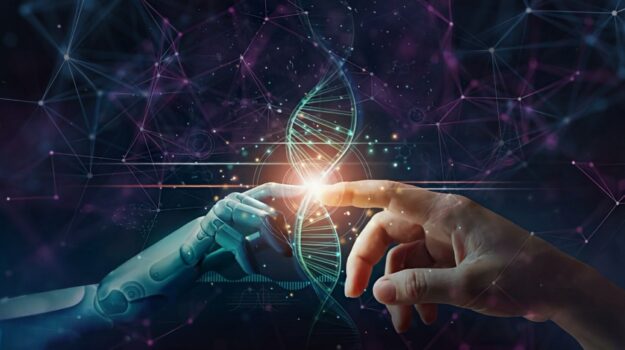
The advent of digital solutions that employ artificial intelligence, internet-of-things, and machine learning technology has dramatically changed how humans and even entire cities operate.
Intelligent traffic light systems, real-time air quality monitoring, and electricity use tracking are just a few examples of how AI continues to embed itself in society.
Key infrastructure systems that keep the world functioning will be made more efficient and sustainable as this transition continues and artificially intelligent solutions become increasingly integrated into the operations of critical systems.
However, as these technologies creep further into daily life, humans will need to learn to live and work with artificial intelligence in a more cohesive, integrated manner.
It won’t be easy for a facility operator to accept recommendations from a machine on how to run a power plant. Inevitably, changes will need to be made during this period of growth.
Many humans will adopt a new set of technological skills to make full use of the benefits of AI and maintaining flexibility as technology continues to change will be vital.
The combination of human creativity and the efficient functionality of AI will bring radical changes across the globe.
Once this is achieved, AI and other smart technologies have the potential to solve the world’s most pressing challenge: the climate crisis.
Can we place trust in AI?
The global AI software market is expected to hit $126 billion in 2025, according to a July report by consumer and market data company Statista, and organizations have the opportunity to take full advantage of their data and this technology to minimize carbon footprints.
A major roadblock standing in the way of the rapid uptake of AI technology is a lack of trust in AI solutions, which often operate in black boxes.
These solutions tend to provide answers with little background or traceability, keeping humans in the dark about how they reach certain conclusions and why they provide specific recommendations. This problem is limiting the ability of AI solutions to magnify human talent in the workplace and address global sustainability problems.
Fortunately, not all solutions keep humans in the dark, and finding the right AI platform is key to the spread of this technology.
In particular, hybrid artificial intelligence is designed to eliminate the black box issue by clearly displaying the reasoning behind the conclusions it draws. Hybrid AI platforms showcase the data they use to make decisions through readily available and understandable audit trails.
The growing popularity of explainable technology solidifies the idea that AI is here to work together with humans rather than replace them.
AI is not a substitute for human knowledge and insight. Instead, it is a tool that can help humans with accurate, confident decision-making.
AI designed to acknowledge this fact is essential to improving human comfortability with these solutions.
With transparency and visibility into processes, humans will gain confidence in the technology they’re using, ultimately giving rise to an era of rapid innovation and accelerated decarbonization efforts.
Through better communication, collaboration, and enhanced processes, artificial intelligence will help decision-makers act quickly when encountering unexpected situations.
Hybrid AI and other solutions that offer an inside look into automated decision-making processes earn the trust of humans.
The advantages of positive human-AI collaboration will help companies advance closer to net-zero goals while improving the bottom line by enhancing efficiency.
Small beginnings in big places
Human-AI cooperation can accelerate the rate of progress for large-scale efforts to fight climate change by upgrading waste reduction and resource preservation initiatives. In fact, there are already many AI-driven initiatives dedicated to resolving climate issues.
Across the energy sector, AI and ML platforms are being recruited to upgrade energy production and alleviate the aging grid with real-time data, energy use predictions, and automation for better power plant efficiency.
This is pertinent to climate change-related issues, like power shortages from extreme heat, because the capabilities of AI can prevent life-threatening grid failures from occurring.
AI-generated predictions about equipment that needs to be replaced or expected power generation offer clarity and guidance to facility operators who must plan for the future, resulting in substantial energy savings and optimized strategies.
Other efforts can be found in AI-powered chips for robotics at the edge.
AI-infused chips for robotics at the edge can prevent equipment failure by monitoring for leaks and other issues that require repair. This innovation keeps equipment in play and out of landfills for longer, thus reducing waste.
These chips are designed to work in tandem with humans by monitoring hardware and providing data-backed insight for human operators to consider, which saves time and effort.
These seemingly minor efforts are adding up, as a March report by Statista predicts that AI is expected to reduce greenhouse gas emissions in North America by 6.1% by 2030 compared to predictions that exclude the use of AI solutions.
A peek into 2050
As the global population continues to soar, it will be anything but easy to meet net-zero goals.
Progress towards this objective will be hard to come by if the world fails to act now and take advantage of the operational efficiency that AI can create.
The responsibility to address this challenge falls on the organizations that are innovating to design cutting-edge technologies that put sustainability first — and on those that have the opportunity to adopt these technologies.
Working with solutions like hybrid AI that encourage trust and promote positive human-AI relations is a must when implementing this transformation.
AI technologies can unleash the potential hidden beneath the surface, helping the world tackle critical challenges like climate change.
- How humans and AI can learn to work together for the planet - September 20, 2022
